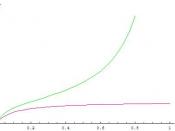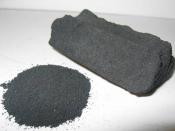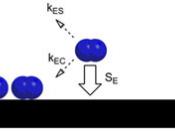I.INTRODUCTIONThis experiment aims to determine the isotherm for Methylene blue - Activated carbon adsorption system and to determine the maximum adsorptive capacity of activated carbon for Methylene blue.
Adsorption is concerned with contacting a solid with a fluid mixture under such conditions that some of the fluid is adsorbed on the surface of the solid with a resulting change in composition of the unadsorbed fluid (Brown, 1950). There are different types of adsorption. Physical adsorption occurs when the intermolecular forces of attraction between the fluid molecules and the solid surface are greater than the attractive forces between molecules of the fluid itself (Foust et. al., 1980). Chemical adsorption, on the other hand, involves chemical interaction between the adsorbed fluid and the adsorbent solid. In ion exchange, the solid gives up an ion to the fluid for every ion it adsorbs (Brown, 1950).
Most adsorption is irreversible and it is difficult to separate the adsorbate from the adsorbent.
Thus, only physical adsorption is used in continuous staged operation (Foust et. al., 1980). Brown (1950) enumerated some of the most important adsorbents and their uses as shown below:AdsorbentImportant Industrial UsesFuller's EarthRefining of petroleum fractions, vegetable and animal oils and fats, and waxesBauxitePercolation treatment of petroleum fractions; drying of gases and liquidsAcid-treated claysContact filtration and refining of petroleum fractionsBone char, bone blackSugar refining; ash removal from solutionsDecolorizing carbonRefining of sugars, oils, fats, and waxes; decolorizing and purification of water and other liquidsGas-adsorbent carbonSolvent recovery; elimination of odors; purification of gasesAluminaDrying of air, gases, and liquidsSilica gelDrying and purification of gases; refining of petroleum distillatesBase-exchange silicateWater treatmentMagnesiaTreatment of gasoline and solventsAdsorption from the liquid phase is used to remove organic components from drinking water or aqueous wastes, colored impurities from sugar solutions and vegetable oils, and water from organic liquids. It can also be...


